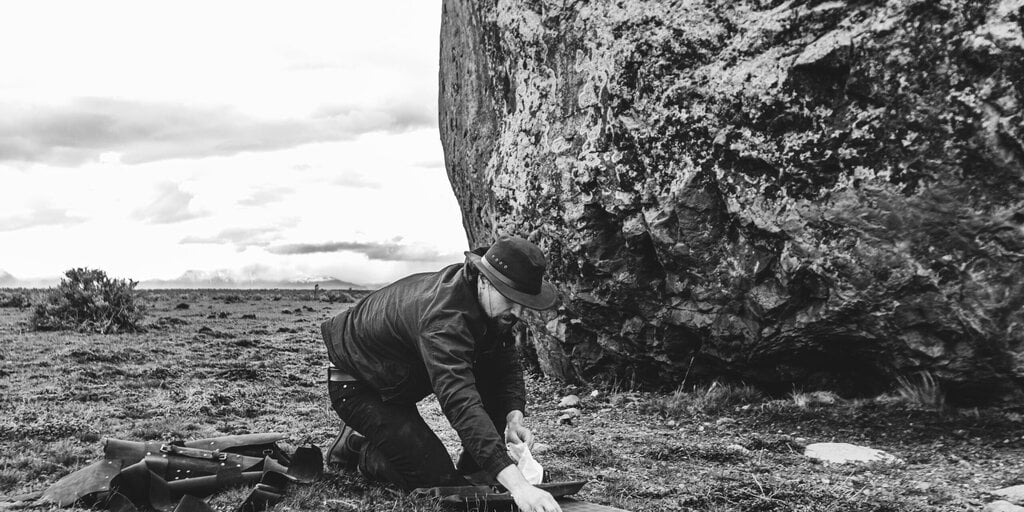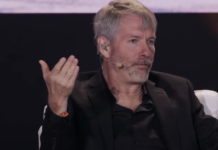A few months ago, the Bright Moments team sat at the base of Mount Fitz Roy in rural Argentina, somewhat concerned.
They were there, near the southern tip of the Americas, to scout sites for an upcoming activation by the pseudonymous artist Deafbeef that would headline their latest CryptoCitizens gathering. And after a 17-hour journey via Buenos Aires, a stop at a glacier, a stint at a local cattle ranch (or estancia), and now, a visit to the mountain featured in the Patagonia clothing brand’s logo, they were coming up empty.
The team knew enough from organizing the last six CryptoCitizens events—which turn the minting of generative Ethereum NFT artworks into immersive experiences held in cities across four continents—to realize that if they didn’t get this all figured out now, they would be, in the words of one Bright Moments team member, “basically screwed.”
Then, as their bus weaved back down the mountain pass through the sprawling guanaco-peppered Patagonia wilderness, Bright Moments founder Seth Goldstein suddenly shot up from his seat: “Stop! Stop the van!”

“I’ve never seen him do this,” Phil Mohun, a Bright Moments team member present that day, recalled to SCENE. “They stop the car, he gets out of the van, jumps over a fence, doesn’t say a word. And then starts running.”
So the team got out too, and started running after Goldstein. After a bit of track and field, they all stood before a massive, 30-foot tall boulder planted in the middle of a vast stretch of empty terrain. No other rocks surrounded the boulder, and no sign indicated how it could have gotten there. The team knew without saying anything: They’d found their spot.

“It felt like something that was not supposed to be there, that had gotten there by chance,” Mohun said. “And I think that’s how we felt.”
The team soon after pitched Deafbeef on the boulder. Without hesitation, the artist was in.
“I thought: This is perfect,” Deafbeef told SCENE. “It’s a little bit absurd. People are going to go all the way there, way out of the way, for this rock? What are we going to do?”
So the Bright Moments team scrambled to secure the boulder. It turned out the fence Goldstein had jumped marked the property line of a local gaucho—who they didn’t know, but their tour guide could get to.

Following an hours-long maté ceremony with the guide, featuring a very roundabout explanation of live NFT minting as “shooting a film that’s… sort of an art project,” according to Mohun, she was eventually brought into the fold. And after a healthy negotiation between the guide and the gaucho, Bright Moments had permission to use the rock.
The rock, it turns out, was a glacial erratic: a massive stone that rode in thousands of years ago on a prehistoric, long-since-disappeared body of ice. For centuries, such formations flabbergasted scientists, who questioned how such distinctive and now-immovable objects could have possibly gotten to their current positions.
That sort of phenomenon greatly appealed to Deafbeef. The artist saw in it a fundamental truth about life and reality.
“It’s a one-way process,” Deafbeef said. “You can go forward, but you can’t go back.”
To bring the concept to life, Deafbeef—who primarily works in digital mediums—crafted a deceptively heavy 18-inch-by-18-inch steel grid, and 100 miniature metal-worked sculptures to fit atop it. The sculptures, dubbed “Hashmarks” by the artist, spoke to the one-way process inherent in blockchain networks: permanent, public ledgers on which data can be inscribed, but never removed.

Each Hashmarks sculpture connects to a corresponding digital token on the Ethereum network. Those tokens each contain a unique image of the imprint of a holder’s sculpture, that can be disseminated or kept private at the holder’s discretion.
Rights to claim 50 of the sculptures were auctioned via Bright Moments to the highest bidders. The other 50 were distributed, in a raffle, to Bright Moments community members around the world.

Crucially, Deafbeef designed the sculptures to be revealed in front of their future holders at the glacial erratic, in Patagonia. The process by which the collection’s owners receive the works would also have to be a distinctly one-way, irreplicable experience.
“People have come in from all over the world and stuff to be in this really remote area,” Deafbeef said. “And it’s only going to exist for that one moment. They’re gonna break off, and go to all the corners of the Earth, and they’re never going to come together again.”
So earlier in November, after months of daily hikes carrying weights, Deafbeef attached 40-plus pounds of metal sculpting to his body with custom harnesses and made the multi-flight journey from his native Toronto to that one boulder at the southern tip of Argentina.
There, 70 art collectors and Bright Moments community members (those able to make the trek) met him, to share in an experience and a project designed to reflect on the fleeting—but uniquely precious—value of every moment in life’s cycle.

“I’m not getting any younger,” Deafbeef said. “My kids are growing, and I’m getting older. And that’s the thing—there’s no dress rehearsal. Every moment is its own moment.”
“And as much as you harbor these fantasies—that, for example, one day I’m going to get together with all my friends from high school again, and we’ll all hang out—that’s done,” he continued. “It’ll never happen again. I’ll see some of them sporadically. But there was a day [in the past] that was the last time that happened.”

Attendees of the Hashmarks activation, though, didn’t find the event overshadowed by a mood of tragic impermanence. On the contrary, some found it to be a more liberating and enveloping experience than many other art shows.
“The people who went were willing to travel so far to be a part of the story of the art,” Emily Edelman, an artist who attended the activation, told SCENE. “Distance traveled, people, climate, terrain, food, and adventure all led to these intimate moments of art each collector got to experience with the artist.”

Many of those moments, like the on-chain images of the Hashmarks sculptures themselves, Deafbeef and the attendees have opted to keep private. The value of them, the artist considers deeply precious—particularly when considered in the context of life’s ultimate one-way process.
“I tend to think a lot about mortality, and just the brevity and fragility of things,” Deafbeef said. “But that’s more of an acknowledgement that gives you freedom. It’s not necessarily sad, it just gives you perspective about how to make the most of the experiences we have as we go. Life is one-way.”

As for the metal plate Deafbeef crafted to hold the sculptures, that will remain on top of the glacial erratic indefinitely—as long as nature keeps it there. Or until the gaucho finds it.
Edited by Andrew Hayward








